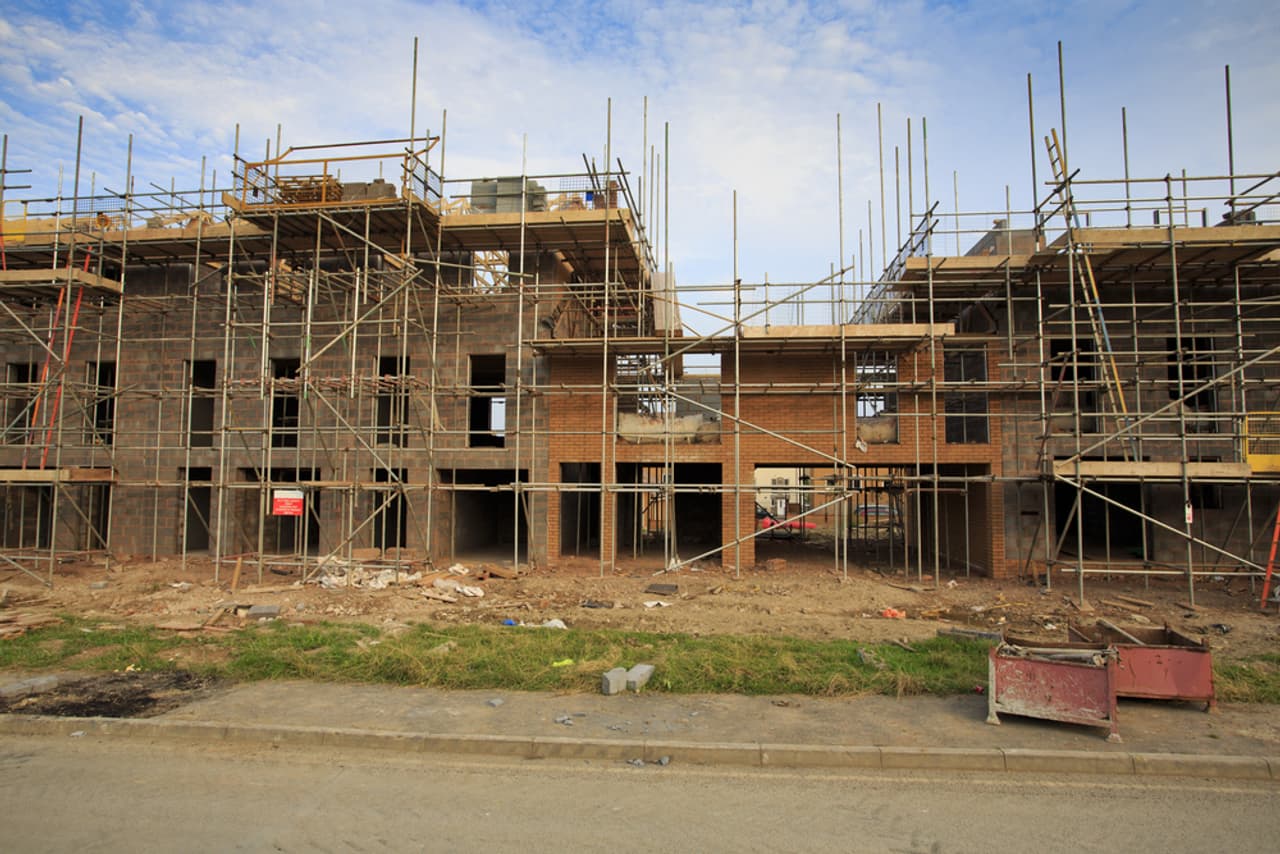
How we did it: Tracking the housing crisis
London urgently needs new homes. (Photo: London houses via Shutterstock.com)
Amid rising homelessness and a shortage of affordable housing in Britain, a team of journalists at the Bureau spent over four months gathering data to reveal the huge financial cost to the UK taxpayer of homelessness.
Our work is rooted in several interlocking data projects. These attempted to establish, among other things:
• The ‘gross’ cost of placing people in temporary accommodation, including bed and breakfast (B&B) facilities, in the UK’s 12 biggest cities.
• The number of households each London borough moved outside its own boundaries on an annual basis.
• The boroughs, towns and cities that London councils are moving people to when they cannot provide housing within their own boundaries.
This is the first part of a larger investigation into the UK’s housing crisis. The Bureau’s housing team has gathered five major data sets, the first three of which we are publishing today. The remainder will be published in the coming weeks.
Project 1: Temporary accommodation and B&B costs
Background
People who are accepted as homeless by local authorities are generally placed in temporary accommodation (TA). Most TA is rented by local authorities from the private sector. Local authorities also house people temporarily in their own council housing stock, bed and breakfast hotels or hostels.
The Department for Communities and Local Government’s (DCLG) figures for the last quarter of 2012 show 53,130 households were living in temporary accommodation. Of these households, 40,860 include children. In the UK, 76,790 children live in TA.
The number of households living in TA fell from 2004, but over the the last three years the figures have risen steeply. Efforts have been made to improve the quality of TA. But Shelter, the housing charity, suggests there is evidence that conditions are still often terrible.
This is particularly true for households who have been moved into another borough, town or city. DCLG publishes data showing how many households are placed in TA by each local authority. But it does not disclose the financial cost of TA. So the Bureau has tracked the cost of this short-term housing (and where possible bed and breakfast accommodation, which is a subset of TA) in Britain’s 12 biggest cities.
Methodology
• To determine the 12 largest cities in the UK, we used Office for National Statistics (ONS) census data. The ONS, however, organises the population into regions and local authorities, not cities.
• In most cases, big cities are local or unitary authorities in their own right.
• On this basis, according to the ONS, the UK’s biggest cities are London, Birmingham, Leeds, Glasgow, Sheffield, Bradford, Liverpool, Edinburgh, Manchester, Bristol, Cardiff and Leicester.
• We recognise that an alternative ranking of cities – the State of English Cities Report – adopts a slightly different approach and places Nottingham, Newcastle and Middlesbrough in the UK’s top 12 cities.
• We decided given the broad nature of our five-pronged Housing Data Research Project, we judged it best to rely on ONS census single local authority data.
Framing the questions to establish the cost of temporary accommodation
To indicate how much TA and B&B costs the UK, we contacted 33 London councils, including the City of London Corporation, and asked them to supply the following:
1. The gross expenditure by your council on bed and breakfast accommodation including shared annexes in the years for 2009/10, 2010/11, 2011/12, 2012/13 (projected in part if necessary) and a projected figure for 2013/14.
2. The total gross expenditure by your council on all temporary accommodation (including bed & breakfast accommodation including shared annexes) in the years 2009/10, 2010/11, 2011/12, 2012/13 (projected in part if necessary) and a projected figure for 2013/14.
• We deliberately asked for the gross expenditure rather than the net cost to the local authority. Local authorities recover a substantial amount of their TA expenditure through housing benefit compensation payments paid for by the Department of Work and Pensions. But this masks the true and overall cost of TA to the taxpayer.
• Some London boroughs did not immediately disclose the information. Others failed to disclose individual years. Where this was the case, we made Freedom of Information Act (FoI) requests.
• We issued FoI requests for all of the other 11 largest cities outside London.
Results
Most local authorities fully disclosed their TA gross expenditure and their B&B costs as a subset of TA for the period 2009/10 to 2013/14.
However a significant number did not disclose a projected 2013/14 figure.
• Tower Hamlets and Merton both suggested their 2013/14 projected spend on TA will be exactly the same as their 2012/13 spend.
• Bromley, Croydon, Haringey, Merton, Liverpool and Cardiff disclosed their TA gross spend for all years but did not provide a separate figure for B&B expenditure.
• Some local authorities suggested some households placed in private sector temporary accommodation may transition into permanent accommodation in the same property. Some boroughs may not capture this status. So the TA spend figures disclosed by councils may be slightly higher than they should be.
• Some local authorities did not disclose their projected TA and B&B spend for the current financial year 2013/14. To arrive at our £414m projected figure ,we calculated the average increase of those boroughs which did disclose budgeted figures. We then applied that average rise across the boroughs that did not disclose to arrive at our overall projection.
Projects 2 & 3: London households moved from their boroughs
Background
London is witnessing an acute housing crisis. As house prices in the capital rise, private landlords have sharply increased rents.
This has caused serious problems for low-income households. Crisis, the homeless charity, last year found a 33% rise in court orders evicting private tenants in the two years to 2012.
Crisis suggested high unemployment, cuts to housing benefit and soaring rents caused a spike in evictions, which in turn has increased the number of people being made homeless.
London’s housing crisis is being exacerbated by a fast-growing London population and a reduction in the number of affordable homes. And the number of new affordable homes entering the market has fallen dramatically: in 2005, construction work began on 7,000 housing association homes in London. By 2012, the figure was 4,450.
London local authorities are also facing a funding squeeze. With temporary accommodation capacity at bursting point, councils have been moving households outside their borders – but nobody has tracked the scale of this issue.
After senior officials from outer London boroughs privately complained to Bureau reporters that inner London boroughs were moving large numbers of homeless people to outer London and beyond, we wanted to establish the scale of the problem.
Methodology
We asked all 33 London boroughs the following questions under the Freedom of Information Act:
1. Please disclose in which districts outside your own boundaries your local authority has over the last three financial years secured properties for the purpose of temporary accommodation, and the corresponding number of properties in each district. Please also include the most recent figures for the financial year 2012/13.
2. Please disclose the number of households who have been moved out of the borough in the last three financial years and in the current financial year to date.
3. Do you anticipate moving households living in temporary accommodation out of your borough in the remainder of the current financial year or in 2013/14, and if so have you projected numbers of households in that respect? Please provide any projections and corresponding destination districts.
Results
The responses indicated that the number of households moved out of individual London boroughs was greater than the number of properties they secured outside their borders for TA purposes.
This suggests properties secured by boroughs outside their borders are used repeatedly to house different households. B&Bs and private sector properties are block-booked or rented on a fairly long term basis to house large numbers of individual households.
There is a possibility that some boroughs double-count the households they move. A small number of households, in other words, are moved out of a borough, return to the host borough and then are moved out again.
A minority of boroughs included in their disclosure, the number of rooms in B&Bs they had secured. This was included in our data.
Some more detailed local findings include:
• The London boroughs of Croydon and Redbridge stated that the number of properties they secured for TA purposes was directly equivalent to the number of households they have moved out of the borough.
• Havering confirmed it does not move people out of the borough.
• Merton provided data for just 2012/13 for the number of households it moved outside its borders.
• Barking & Dagenham, Bexley, Hackney and Haringey, responding to the number of properties they secured for TA, only gave numbers for households moved, rather than properties secured.
• For Barking & Dagenham, the numbers in response to this question (72) is different to the overall total of households moved outside their borders (140). This indicates the same properties are repeatedly used.
• For Bexley and Haringey, the numbers of properties secured and households moved precisely match. (165) In Hackney’s case the numbers nearly match (A: 438 B: 447).
• Tower Hamlets did not disclose where it secured B&B rooms outside its borough borders. It did disclose where it secured properties for the purpose of temporary accommodation.
The Bureau’s housing team consisted of Nick Mathiason, Will Fitzgibbon and Victoria Hollingsworth. Miranda Atty and Jude McArdle also worked on the project.




